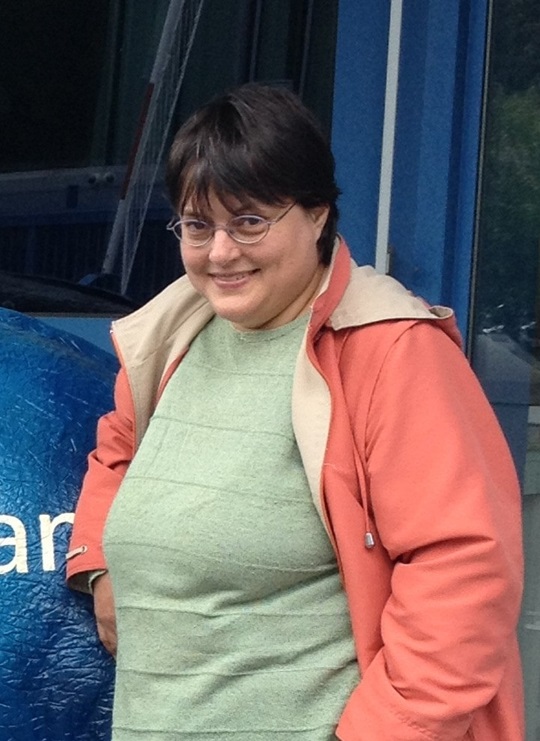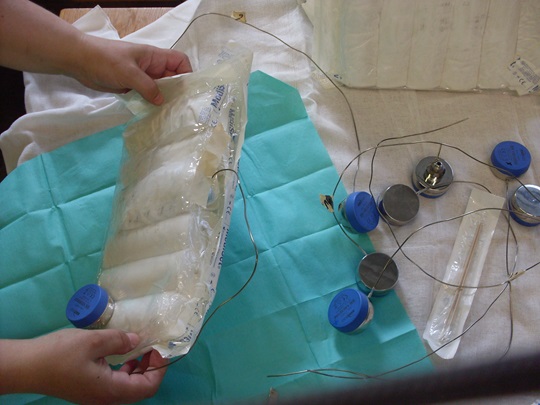The power of the secret ingredient isn’t limited to the culinary arts. It’s in healthcare too. And for the safest solutions in healthcare, there is one secret ingredient in which Martina Gauggel specialises.
Almost all good foods have a secret ingredient.
No matter what it is, the greatest quality of the secret ingredient is that it is typically a simple, ordinary element that can completely change the experience for the eater – like nutmeg or even anchovies.
But the secret ingredient isn’t limited to the culinary arts. It’s in healthcare and patient care too. And for the safest healthcare solutions, there is one secret ingredient in which HARTMANN’s Martina Gauggel specialises. Steam.
In the medical device industry, steam is added well before it reaches the patient and enters the clinical setting. It’s a combination of air and water -- two everyday elements --that when cooked and cooled at the right temperature, for the perfect amount of time, and added to the right materials, have the potential to save a life.
Steam is the secret ingredient that stands between a safe surgery and a surgical site infection.

Grandmother’s recipe
Typically, the best recipes (and secret ingredients) are just like family treasures, traditionally passed down from generation to generation. For Martina, a pharmaceutical engineer with IVF HARTMANN in Switzerland, the tradition works a little differently.
“My grandparents raised me as their own,” Martina explained. “So as my grandmother aged and became ill, it was up to me to care for her. As a caretaker, my only priority is to make sure my grandmother gets the best treatment. As a pharmaceutical engineer, my priority is to ensure the safest solutions are the only option.”
The Cook
“With steam recipes, you need to look at a range of factors – time, pressure, and cooling phases,” Martina explained. “When the development department comes to me with a new product, my job is to figure out how to get it sterile while keeping the active properties of the solution intact.”
Trained as a pharmaceutical technical assistant, with studies ranging from engineering and pharmacy, to microbiology and quality assurance, she is a sterilisation expert. With nearly 20 years of experience and more than 100 products validated, she has never had a product recalled.
“I have a checklist,” said Martina. “There are a series of questions I ask myself when I am working to develop a sterilization formula. These questions range from identifying the right amount of pressure and temperature, to finding the optimal sterilization unit – how many solutions can be sterilized at once.”
According to Martina, those were the questions she asked herself when e.g. working with the HARTMANN’s wound care solution.

“If you don’t put enough pressure at the peel pouch it will explode because the liquid inside may press against the seal,” she explained. “Secondly, if we sterilize too many at the same time, the product may not get sterile. And without the right temperature, we run the risk of a product defect; it won’t function as it is supposed to, because an element was altered.”
The size and capacity of the sterilization equipment is critical for Martina’s work.
“I want to know how I can use my machine optimally. I want to know if the product has enough space to work and if the temperature reaches each product,” she said. “Next we conduct test runs with different sterilization times. Here we evaluate the time then test germs die and add an assurance time. That is the sterilisation time.”
According to Martina, for small products measuring about 4 cm, that is about 90 minutes, with a sterilization temperature at 121°C. Larger solutions can take up to three hours.
“I’ll never rush this procedure,” said Martina. “My client is the patient. My only focus is the real people who will use these solutions, like my grandmother. It must be 100 percent sterile and I need to have the data to prove it, otherwise I won’t continue. Safety is the priority.”
